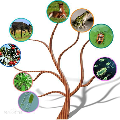Modern systems are designed to operate in increasingly variable and uncertain environments. Not only are these environments complex, in the sense that they contain a tremendous number of variables, but they also change over time. Systems must be able to adjust their behaviour at run-time to manage these uncertainties. These self-adaptive systems have been studied extensively. This paper proposes a definition of a safety-critical self-adaptive system and then describes a taxonomy for classifying adaptations into different types based on their impact on the system's safety and the system's safety case. The taxonomy expresses criteria for classification and then describes specific criteria that the safety case for a self-adaptive system must satisfy, depending on the type of adaptations performed. Each type in the taxonomy is illustrated using the example of a safety-critical self-adaptive water heating system.
翻译:现代系统的设计是为了在日益多变和不确定的环境中运作。这些环境不仅复杂,因为含有大量变数,而且随着时间变化而变化。系统必须能够在运行时调整其行为,以管理这些不确定因素。这些自适应系统已经进行了广泛的研究。本文件提出了安全临界自适应系统的定义,然后根据适应对系统安全和系统安全情况的影响,描述了将适应措施分为不同种类的分类学。分类学提出了分类标准,然后根据适应系统所执行的适应措施的类型,说明了自适应系统的安全情况必须满足的具体标准。分类学中的每一类都以安全临界自适应水热系统为例加以说明。



